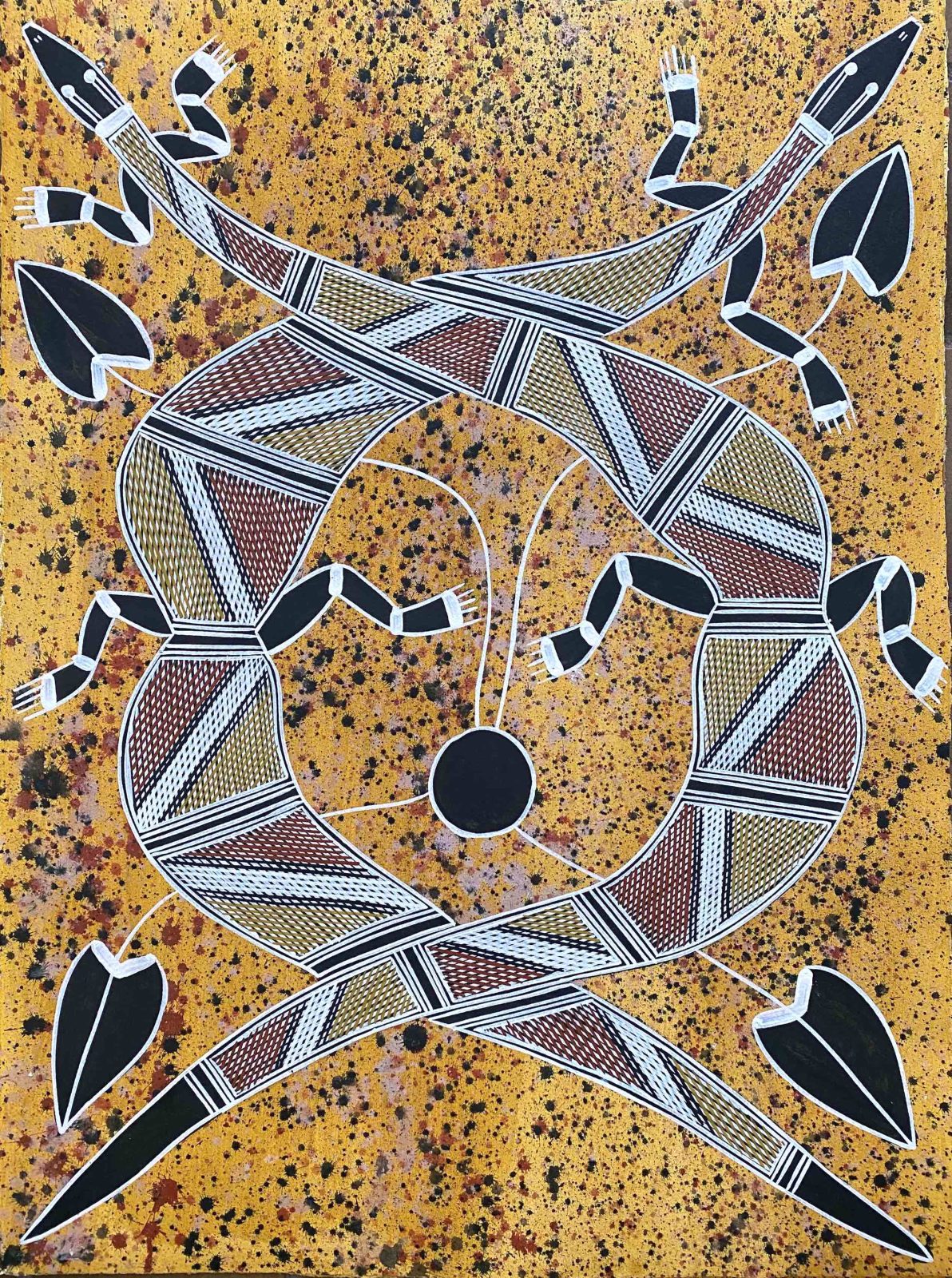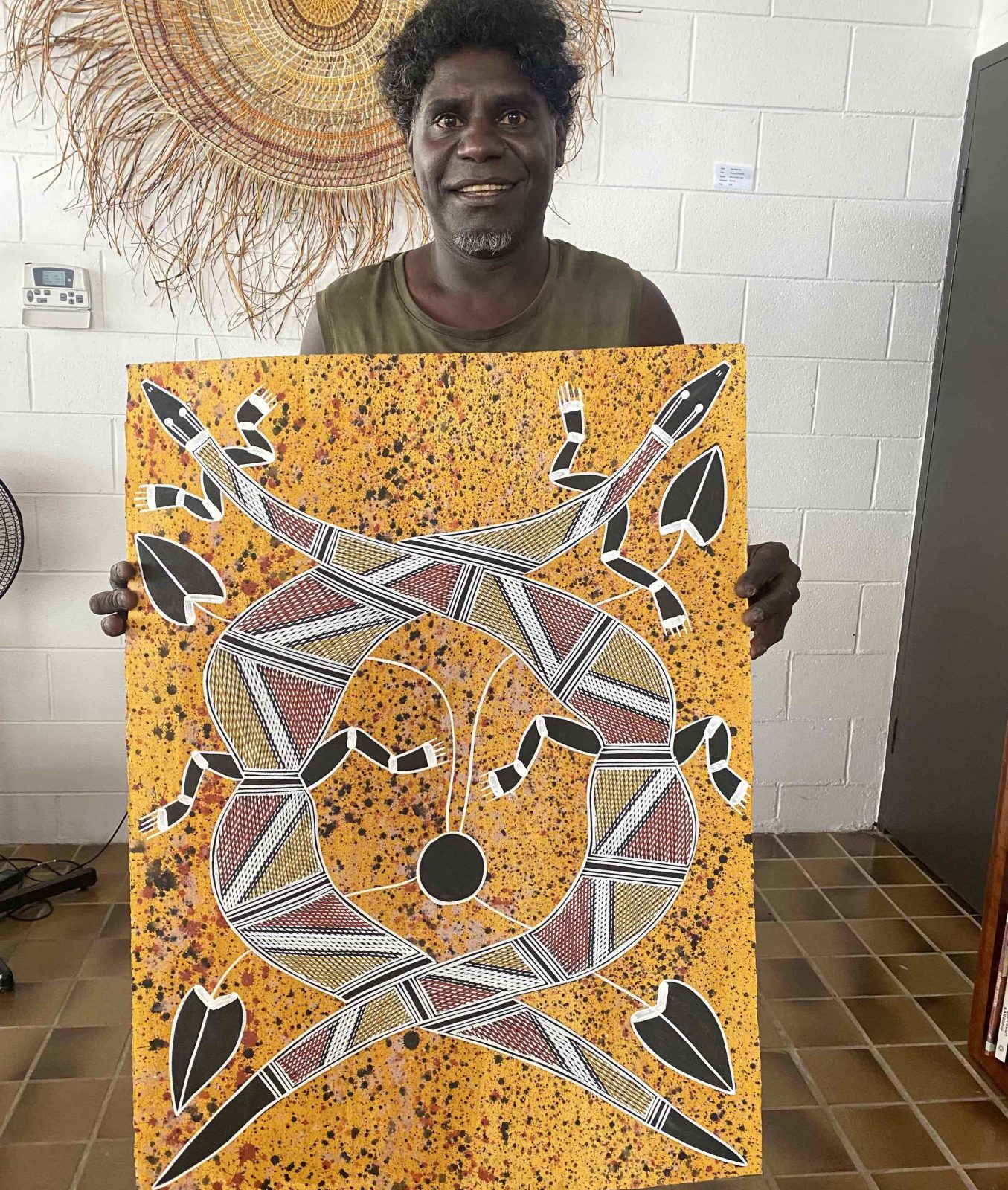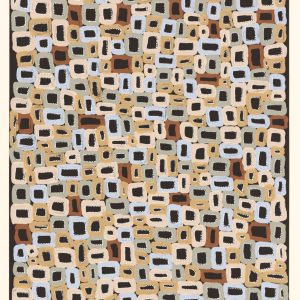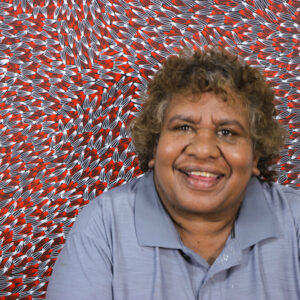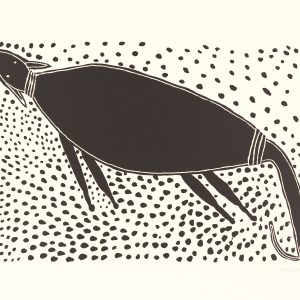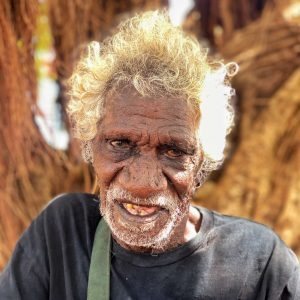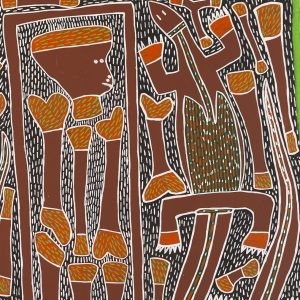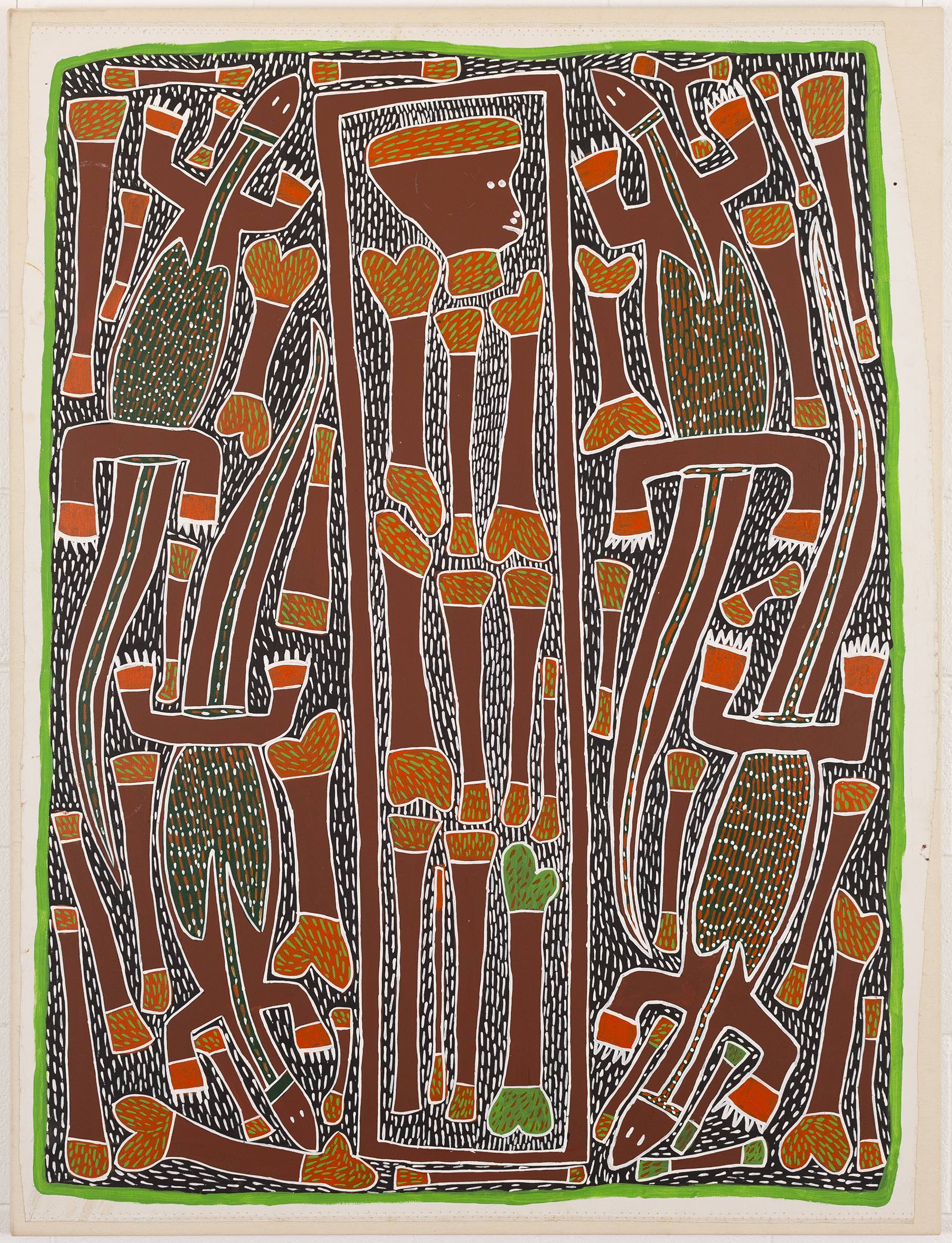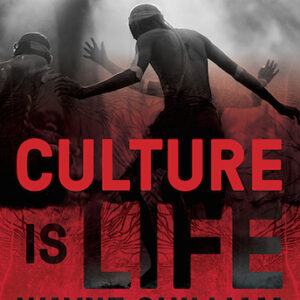Description
Artwork certificate provided.
Various animals and plants have cultural significance to the Kunwinjku people who live in Western Arnhem Land in the ‘Top End’ of Australia. The Burarr, or Water Goanna, inhabits the wetland areas of Western Arnhem Land that include billabongs, rivers and floodplains.
The Burarr has a streamlined body and paddle-shaped tail, which differentiates it from land goannas. They are frequently hunted for their tasty white flesh, and their eggs are also sought after as an excellent food source- these are found in their dens which can be a hollow log or a dug out burrow. The cross-hatching technique used for the in-fill is called rarrk.
Kunwinjku art is part of the oldest continuous art tradition in the world. Ancestors of today’s artists have been painting the rock walls of West Arnhem Land for tens of thousands of years. The traditional palette of white, red, yellow and black comes from the ochre that naturally occurs in the region, although contemporary artists sometimes choose to paint in acrylics as well. Kunwinjku artists famously paint using either the traditional rarrk hatching technique, or the more contemporary and complex cross hatching technique which has been adapted from ceremonial painting. These lines are carefully painted using a manyilk, which is a piece of sedge grass shaved down until only a few fibres remain.
Allan Namaniyuo Biography
- Year: 2023
- Artist skin name: Balang
- Clan: Burarra/Bininj-Kunwok
- Born: 1984
- Language group: Kunwinjku
- Community: Gunbalanya (Oenpelli) NT
Allan grew up in Gunbalanya (Oenpelli) in West Arnhem Land and learned to paint from his grandfather and father in Maningrida. He paints in both acrylic and ochre and is inspired by the stories painted on Injalak Hill and the plants and animals that live around his home in West Arnhem Land. He has a lyrical style and often favours symmetry in his artworks. Allan is also an Injalak Hill Tour Guide.

